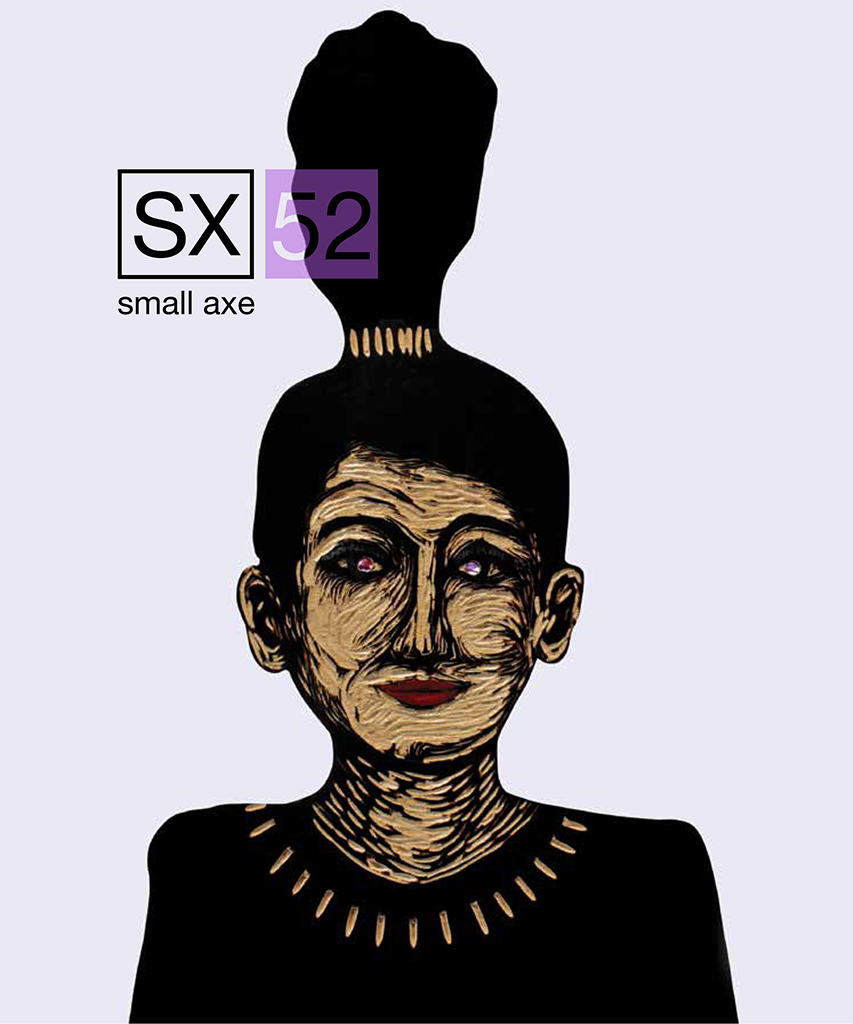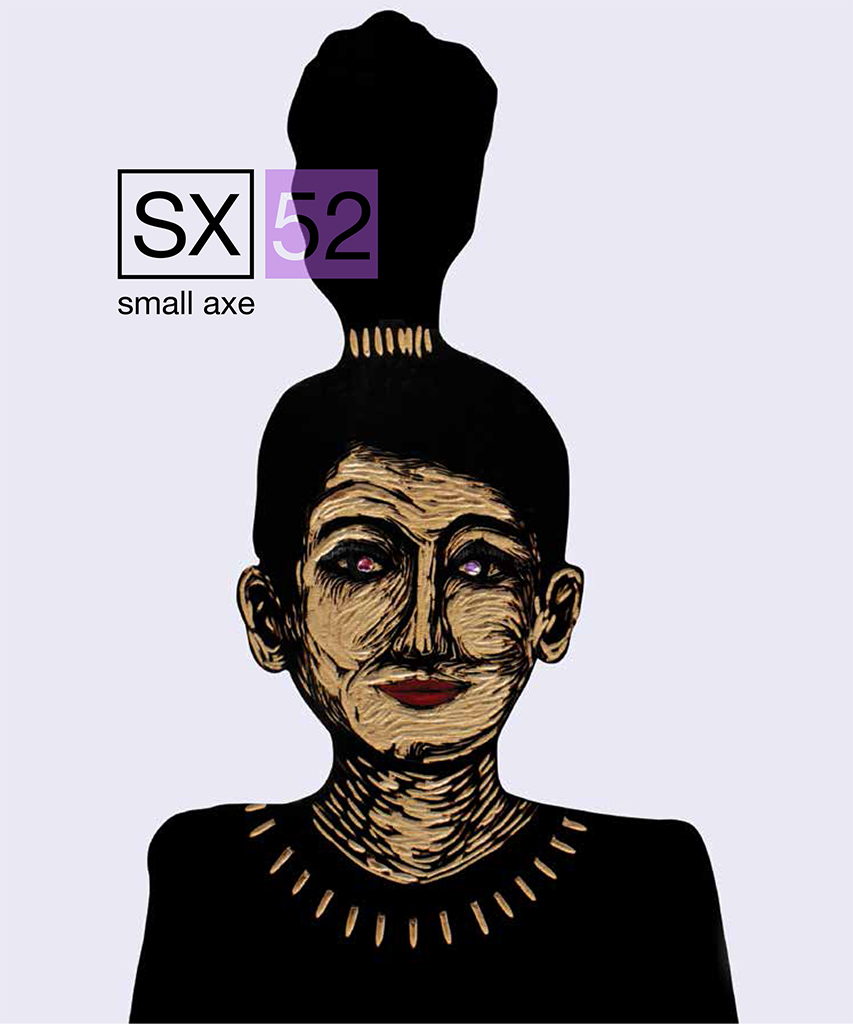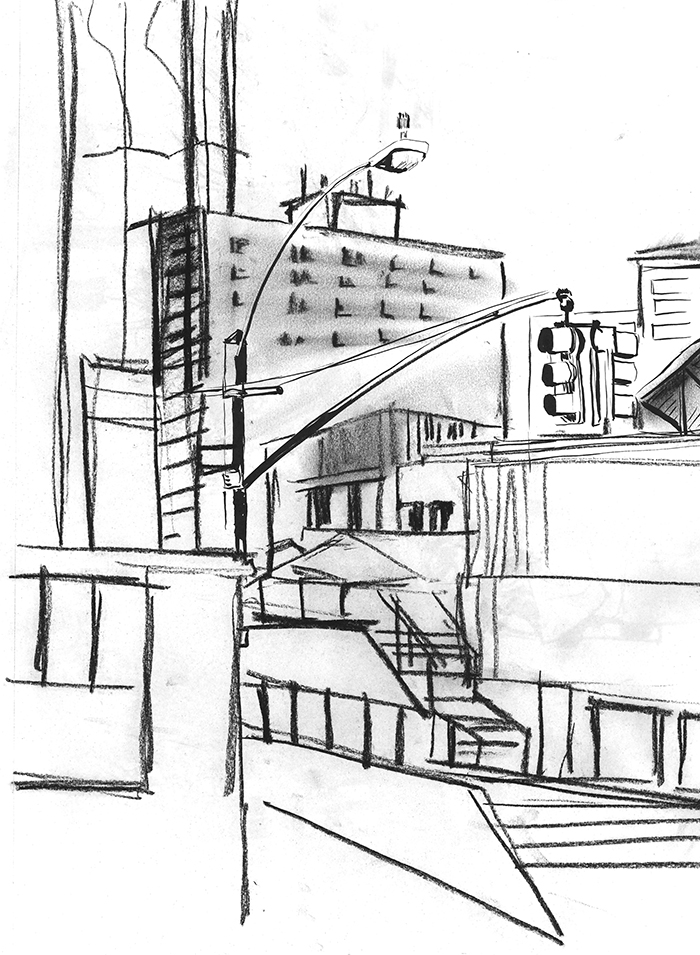sx blog
Our digital space for brief commentary and reflection on cultural, political, and intellectual events. We feature supplementary materials that enhance the content of our multiple platforms.
She'll Chew You Up: Tiana Reid on Safiya Sinclair and Tiphanie Yanique

Tiana Reid, Small Axe's editorial assistant, has recently published a piece for Cordite Poetry Review on Safiya Sinclair's debut book of poems, Cannibal, and Tiphanie Yanique's 2015 Wife. "If the novel form is a question mark," she asks," then, and while reading...Cannibal... I thought the poetic form might as well be an em dash. Versatile, incidental, fragmented, paratactic, broken down and broken into."
To read Tiana's full review, please visit Cordite's website.
Tiana Reid is a writer whose work has been published in ARC Magazine, Bitch, Briarpatch, The Feminist Wire, Full Stop, Lemon Hound, Maisonneuve, Mask Magazine, The New Inquiry, Rabble.ca, The Rumpus, The Toast, VICE and more. She is a PhD student in English and Comparative Literature at Columbia University and editorial assistant at Small Axe: A Caribbean Journal of Criticism.
Listening to Small Axe 52

Listening to Small Axe 52
by Tiana Reid
While working on Small Axe 52, I kept hearing it. In the inaugural Small Axe playlist, you can hear what I heard: a “no capitalist” chorus, Nicole Awai’s “oozing between [the] mediums” of visual art and music, influences of Nina Simone and Wu-Tang Clan, Jamaica Kincaid’s voice, and much more. A good chunk of this playlist includes the “reggae revival” discussed in Kezia Page’s “Bongo Futures,” which was published in Small Axe 52. Other references were less to-the-letter, like Edna Manley’s 1936 mahogany sculpture, Market Women, which takes shape in Langston Hughes’s literary imagination of “old women” in Paris and Mexico.
Small Axe 52 is now available!

Small Axe 52
March 2017 is now available!
This issue includes a special section, "Art as Caribbean Feminist Practice," guest-edited by Annalee Davis, Joscelyn Gardner, Erica Moiah James, and Jerry Philogene that focuses on the work of women whose artistic practices are grounded in a feminist ethos and engage multiple and nuanced meanings of the Caribbean and its diaspora across linguistic, geographic, material, and formal boundaries. The visual portfolio includes art by Deborah Anzinger, Sheena Rose, Keisha Scarville, and others. The special section "Eulogizing Creoleness? Rereading Éloge de la créolité" edited by Martin Munro and Celia Britton, includes a variety of essays that explore and assess the impact, twenty-five-plus years on, of the controversial manifesto by Patrick Chamoiseau, Raphaël Confiant, and Jean Bernabé. SX52 also features a discussion of Rosamond S. King's Island Bodies: Transgressive Sexualities in the Caribbean Imagination.
See our full table of contents here.
A Caribbean Gallery of Art: An Interview with Juliet Ali

by Gabrielle DaCosta
Juliet Ali is a graphic designer from Trinidad, residing in New York. She is an independent artist as well as the artistic director behind the Small Axe covers since 2006. We sat down together to discuss how she thinks Small Axe covers have changed over the years, and the role of the graphic designer in determining their future.
When did you join the Small Axe project?
It’s been a while. I came on board when we got to issue number 19, which was around 2006. I also had some dealings with issue 16 (2004) and 17 (2005), helping to pull it together. From around issue 10 (2001), there was a change in the style, but the masthead stayed the same until issue 19. That was looking a little dated. At around issue 19, I had a little more influence in the cover design. I put forth to David that the masthead should be changed to make the cover a little more modern looking. You can see the new look begin to emerge from issue 28 (2009). Twenty-eight had a new look but managed to maintain the same sx feel. This was the beginning of a new generation.
For the 50-issue milestone, we did something a little different and interfered with the masthead. It no longer has the tagline “A Caribbean Journal of Criticism” on the front. Such changes are subtle but they move us in a good direction. What we want to do is minimize the masthead, in order to give the cover more real estate to showcase the artists’ images. That way the covers become a platform for a gallery of images. When you line them up, you can see a progression.
Do you think that the progression of the covers tell a story of how the content of Small Axe has changed over time? Or do the covers have a merely incidental relationship to the broader development of the journal?
I don’t think its incidental. But it’s also not really a story as such. The cover does not relate to any project within the journal in that particular issue, but over time the images have become more powerful. As the journal grew, the covers got stronger, so that eventually they could stand on their own. They don’t necessarily have to tell a story. Nevertheless, there is something unquestionable about them.
What is your role in the process? Between the artist and the image, and the cover that we see in front of us, where does your work fit?
My role is really to bring the cover together and to bring it to life. Say, for example, we are moving on to issue 53, David will say, “I have some images for you to look at. Take a look at them and tell me if they can work as a cover.” I will look at it and say if I think it can work. If he is really adamant about a particular image I will say “alright, we’ll make it work.” It all depends on what I’m faced with. I can’t determine what I will do until I really see it, digest it, play around with it.
And when you came on, did that come about as a result of a preexisting interest in the journal?
I was introduced to Small Axe at around issue 13 (2003). I was asked if I could retouch some images. Our mutual friend, Christopher Cozier, introduced me to David (when we all started talking I told David that I was a graphic designer) I had never heard of Small Axe. It slowly started coming together, not in an official way, it just happened. Christopher later left Small Axe and I stayed on and continued the work I was doing there. We moved from one era of Small Axe to another, where the whole look and feel of the journal changed drastically.
What does a graphic designer do, more generally?
A graphic designer is someone who can conceptualize and see beyond the present. We are really visual problem solvers. You have to remember what it is you’re designing for. It’s not an in-flight magazine, it is not a comic book, it’s an academic publication. You have to understand what you’re working with. You have to know why you’re designing it in this particular way and how it can become functional. A cover becomes functional when it can stand on its own. A “successful” cover can really stand against other journals out there and other designs.
So as a designer you have to have a certain sensibility?
Yes, you have to be able to see it, not only in the present but also down the road. You have to see a few years ahead. You can’t just design for the now. You have to design something that will withstand the test of time at least for a few years, and then know when it is time to revamp. It’s part of the skill of branding, to think in this way. The designer thinks about longevity and thinks about the little changes that keep a design flowing and moving.
What do you think a Small Axe cover should evoke? What kind of response should it elicit in the people who read Small Axe? Do you think of those things when you make a cover?
I don’t think about it like that. The main thing is that when you’re working with an artist’s piece, you don’t want to change their work “too much”; you don’t want to bastardize it. For example, with issue 24 (2007), we inverted Kishan Munroe’s original image—“If I Ever Rise”—and used it as a negative image. At first, I think David was a little hesitant about doing this, but when he saw it, he liked it, and then Kishan liked it. Also, number 47 (2015). The original image of the dog was red. So, we asked the artist, Jorge Pineda, if we could make the entire cover red. The original image—“Perra II”—was lovely, and the changes brought it to life as a cover. We try to push the bar a bit but we also work within the limitations we have with Duke University Press. When I sit with an image, my mind runs wild. But sometimes the things you imagine are impossible because of financial factors and constraints. It would be nice to push the bar all the time, but what can you do?
You are an artist in your own right. Can you tell a little about that?
I’ve always been a graphic designer. I’ve always had a love for illustration. I went back to school for that. As a whole I am definitely an artist. Now I don’t really draw the line between graphic design and illustration. I combine them, so I do have my work on the side. I do have my work, that’s separate. Small Axe is separate. My job is separate. My illustration is separate. Someday I’d like to bring one into the other, but who knows? I’m still in the learning phase. So I am very skeptical about showing work. Maybe in time. I do a lot of pencil and a lot of graphite. I enjoy doing that. I’m not much into color. Black and white is my thing, but I am still experimenting. I try different things. I always come back to that. For now I am trying to let it grow and let it become something more.
.jpg)
.jpg)
Which Small Axe cover is your favorite?
I have two actually. Number 36 (2011), definitely and number 33. Number 29 (2009) is also top three. Issue 33 is a stunning black and white, which obviously excites me, and 29 has something eerie about it.
Which one was the most labor-intensive?
I wouldn’t say that one was worse than the other. The image kind of speaks to you. It sounds kind of silly, but it speaks to you in a way that you can see it happening. You pull and tug at it to get it to work, and you put it down when you say, “that’s it!”
Number 50 (2016), however, we had a lot of back and forth with that image. Because of the beauty of the image itself, I wanted to clean it all off. So I went in there and cleaned out each little pocket, retouched it, and added a nice gloss finish to contrast the background. All of these little things are what gives the cover a special feel. And the masthead is never too intrusive, taking over or obstructing the art. All this together is what makes the cover work.
Any squabbles with David over a final image?
I wouldn’t say squabble! What is nice about David is that he has a certain kind of vision. Not only does he like an image, it is something that he connects quickly with. There was one image upon which we disagreed—issue 35 (2011). I wanted the front image on the back and the back image on the front and he wanted it switched around. So we switched it. I was okay with this decision, but my original suggestion had been based on the simplicity of the back image; a simplicity which made it suitable for the cover. And personally I found it stunning—certain features of the portrait were just clean and clear, such as the thick lips and the long neck with nothing else in the image to compete with them. In my opinion, the portrait we ended up choosing for the front had [too much] going on.
It’s such an arresting part of the project. It wouldn’t be the same without the beauty of the covers.
I think it grew. Now the covers, as you can see, for example, on the poster, are like a collection, a Caribbean gallery of art. Now looking back on the covers and talking about them takes on a whole new meaning. And they are growing, moving. Who knows where they will move to next? The visual aspect of the journal is moving and it has to move. It cannot just stay there. Will I be the one to move it? I don’t know. But it has to move.
